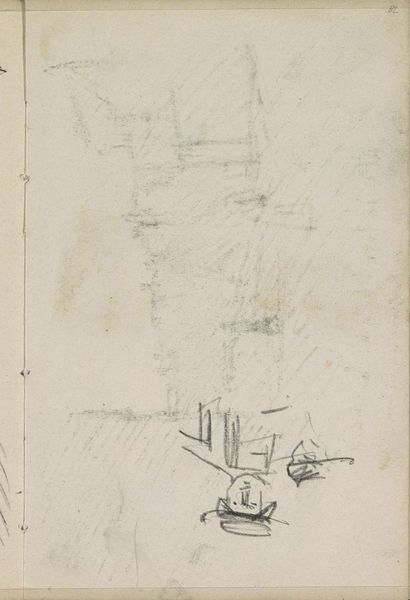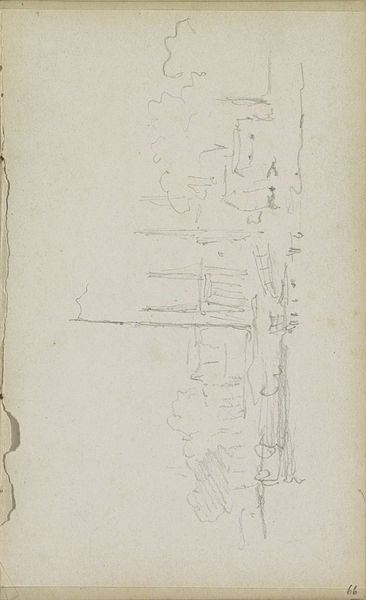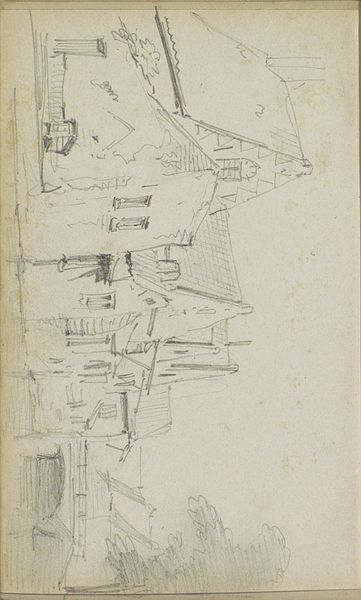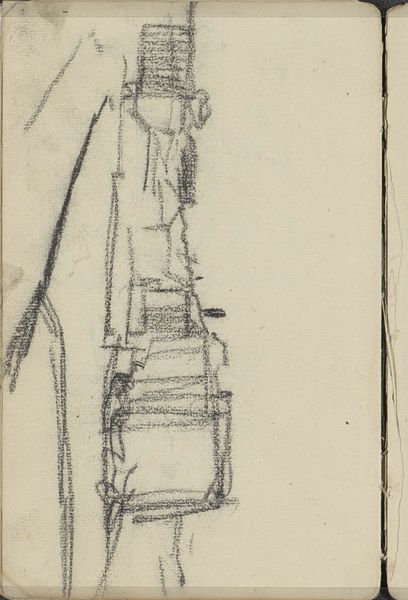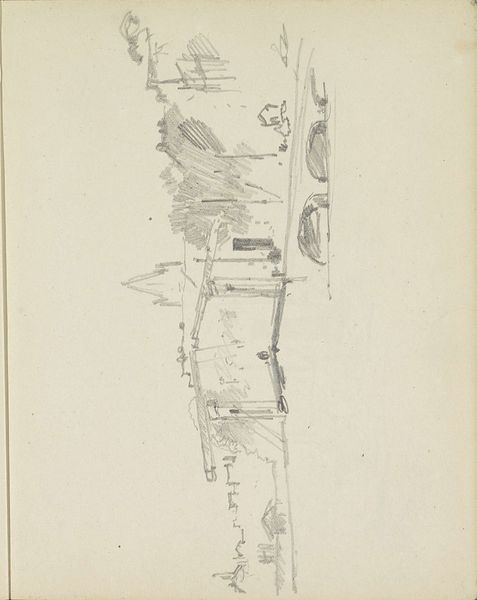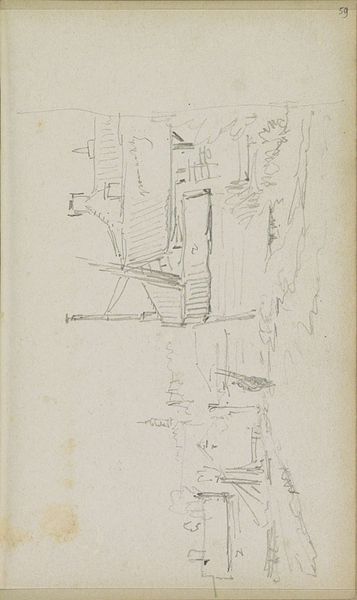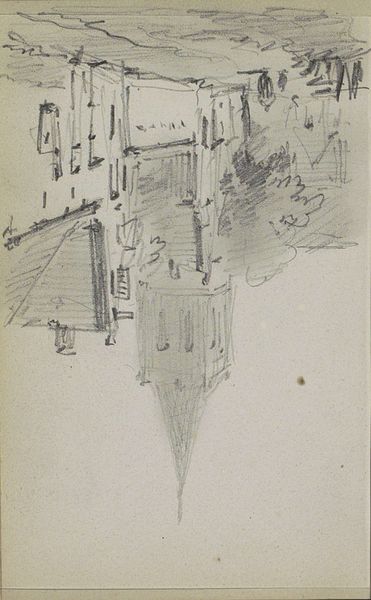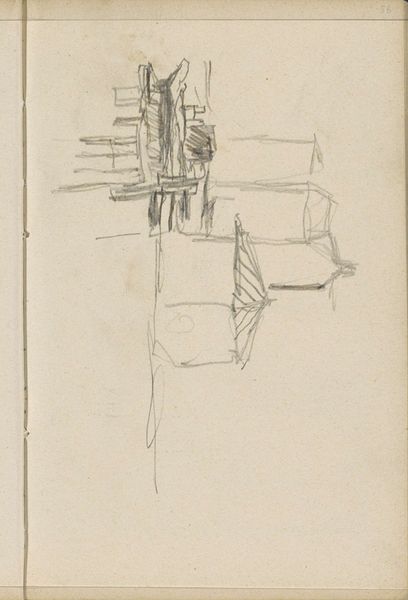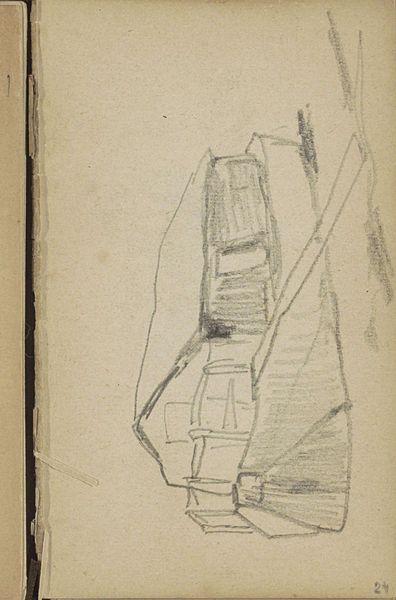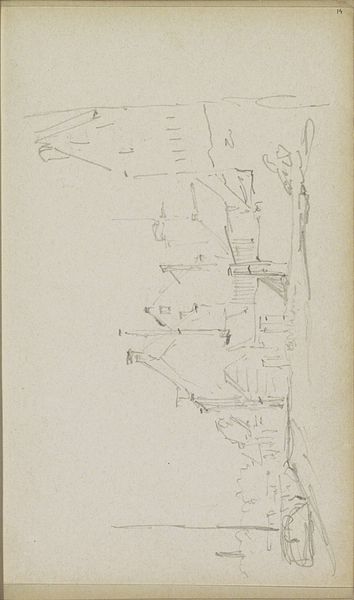
Copyright: Rijks Museum: Open Domain
Editor: So, here we have "Boerenwoningen aan de Rotte," or "Farmhouses on the Rotte," a pencil drawing on paper by Johannes Tavenraat, created somewhere between 1862 and 1867. It’s housed right here at the Rijksmuseum. It strikes me as almost ghostly, this hazy sketch of a rural scene. What captures your eye in this piece? Curator: Ghostly is such a lovely way to describe it! It's true, isn't it? This drawing feels less about perfect representation and more about a memory, or a feeling about a place. For me, it's the intimacy. Imagine Tavenraat, sitting by the Rotte, capturing this fleeting moment in pencil. It’s like glimpsing a scene from a dream. You can almost feel the quiet of the Dutch countryside. Editor: Absolutely! I feel like I am looking at his personal notebook. How much did the style of romanticism influence him? Curator: Oh, profoundly. Think about what Romanticism was rebelling against – cold, calculated reason. Instead, artists were reaching for emotion, for the sublime in nature. Even in a humble subject like these farmhouses, there’s a sense of yearning, a gentle melancholy. You see the realist in him grounding the work in observation, while the Romantic elevates it with feeling. He offers something heartfelt, personal. Does that resonate with you? Editor: Definitely. It makes me want to find out what he was truly thinking! Thank you for clarifying! Curator: It’s precisely that "unknowable-ness," that touch of mystery, that makes art so endlessly fascinating, don't you think? Art is an invitation, not a declaration. It's nice to come along for the ride.
Comments
No comments
Be the first to comment and join the conversation on the ultimate creative platform.
